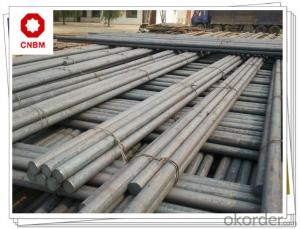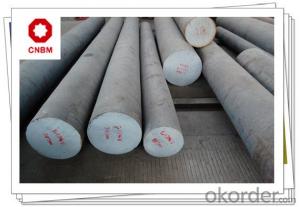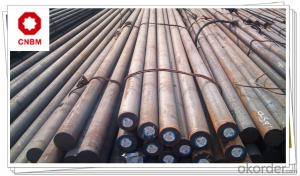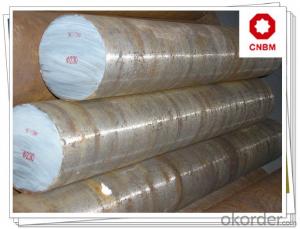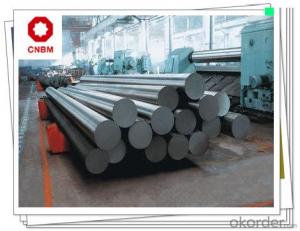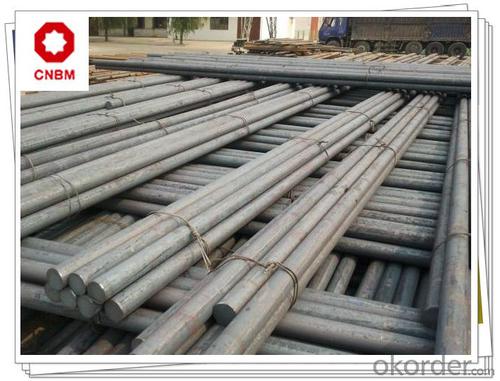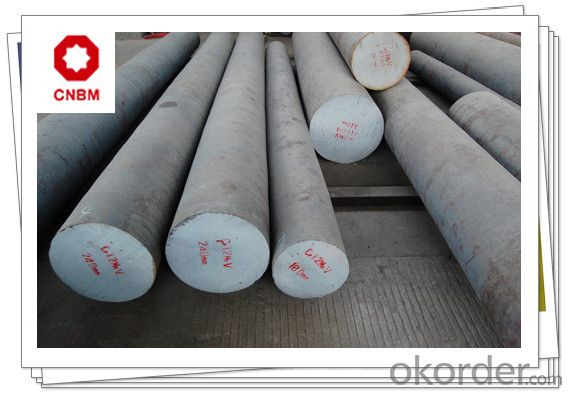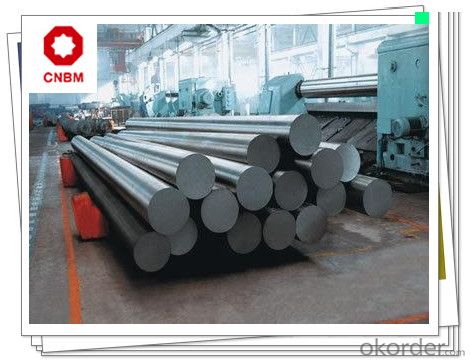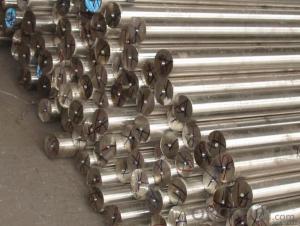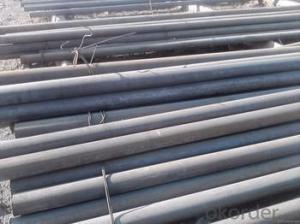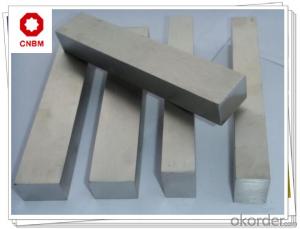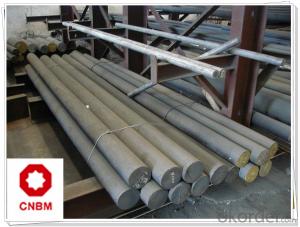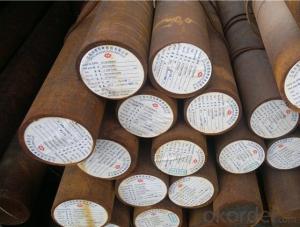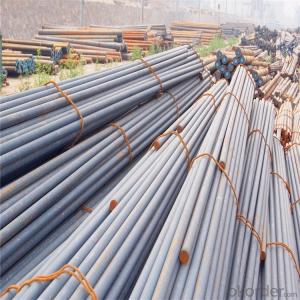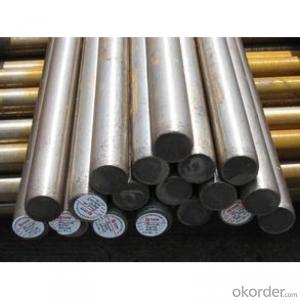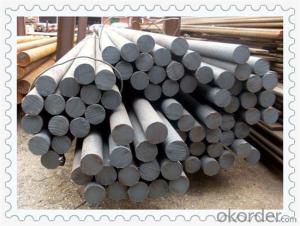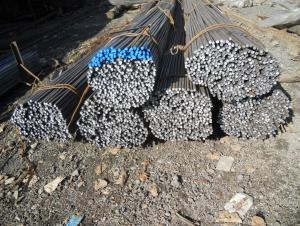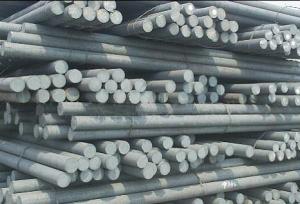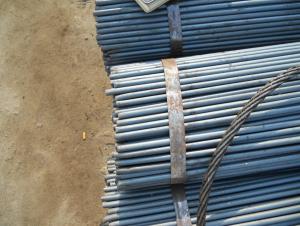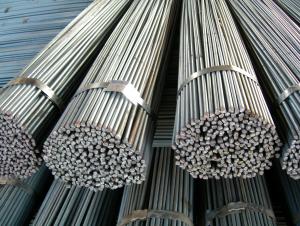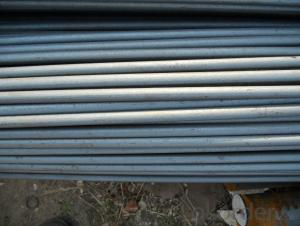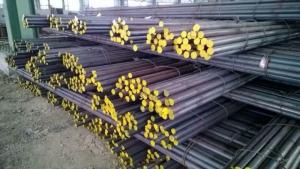Carbon Steel Rod SAE 1020 Carbon Steel Bar
- Loading Port:
- Shanghai
- Payment Terms:
- TT OR LC
- Min Order Qty:
- 30 m.t.
- Supply Capability:
- 120000 m.t./month
OKorder Service Pledge
OKorder Financial Service
You Might Also Like
Carbon Steel Rod SAE 1020 Carbon Steel Bar
Specification
1, Diameter: 8mm-250mm rounds
5mm-9mm rods
2, Length: 2m, 3m, 5.8m, 6m or customized
3, Standard: GB, ASTM, AISI, SAE, DIN, JIS, EN
OEM technology - send detailed technical parameters for accurate quotation.
2, Produce Process: smelt iron - EAF smelt billet - ESR smelt billet -
hot rolled or forged to get the steel round bar and plate
3, Heat Treatment: annealing, normalizing, tempering, quenching
4, Surface Treatment: Black, Polished, Galvanized
5, Quality Assurance: We accept third party inspection for all orders.
You can ask testing organizations such as SGS, BV, etc. to test our products before shipping.
| Chemical Component | C | Si | Mn | P | S | Cr | Ni | Cu |
| 0.17~0.23 | 0.17~0.37 | 0.35~0.65 | ≤0.035 | ≤0.035 | ≤0.30 | ≤0.25 | ≤0.25 |
Products Show
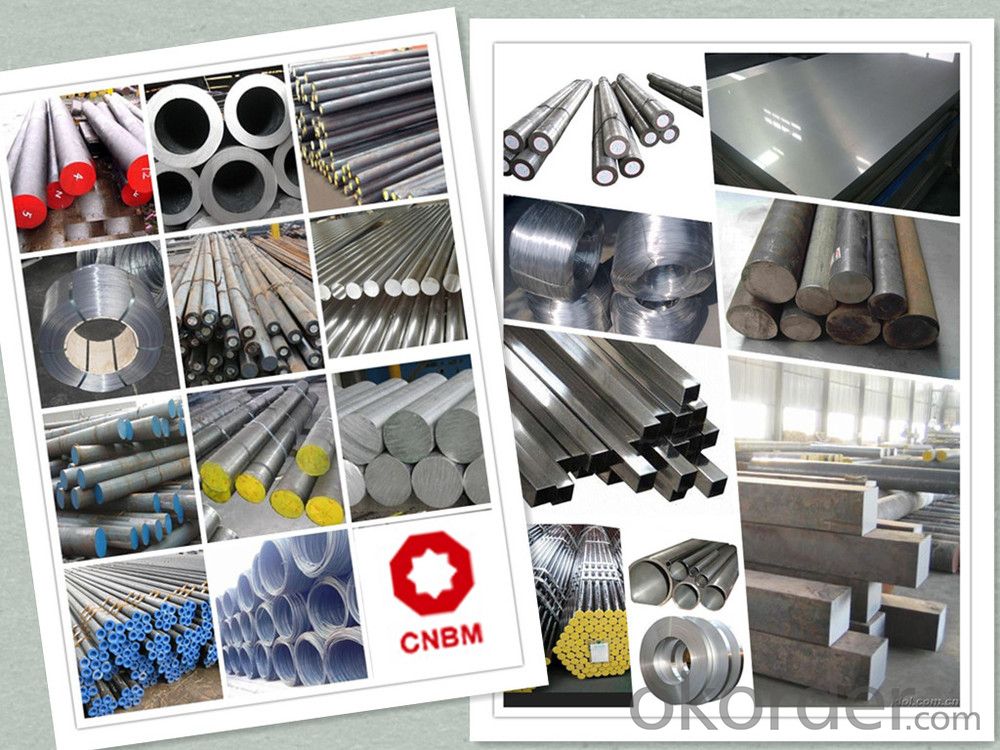
Work Shop
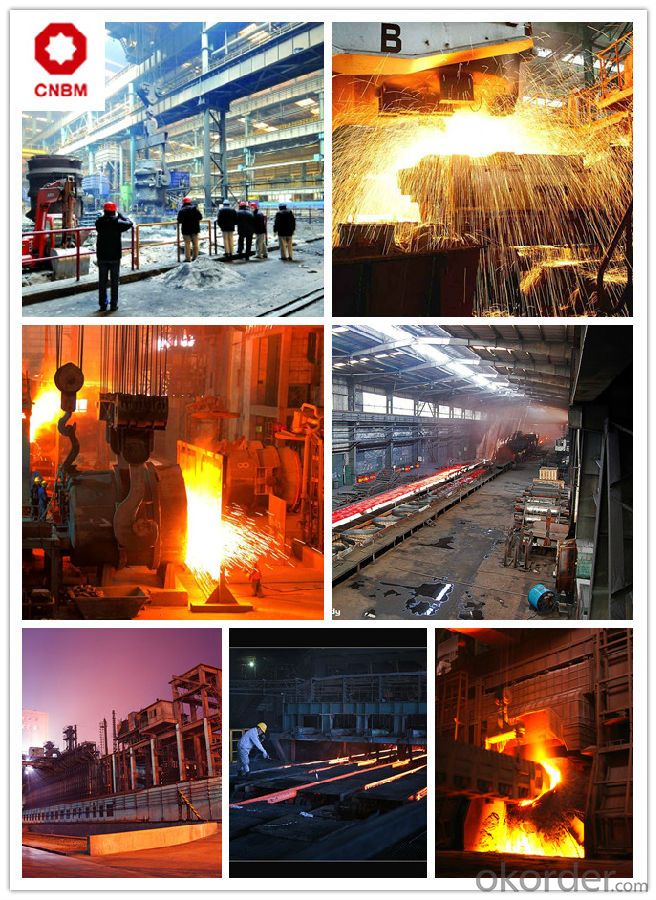
Company Information
CNBM International Corporation is the most important trading platform of CNBM group.
Whith its advantages, CNBM International are mainly concentrate on Cement, Glass, Iron and Steel, Ceramics industries and devotes herself for supplying high qulity series of refractories as well as technical consultancies and logistics solutions.


FAQ
1, Your advantages?
professional products inquiry, products knowledge train (for agents), smooth goods delivery, excellent customer solution proposale
2, Test & Certificate?
SGS test is available, customer inspection before shipping is welcome, third party inspection is no problem
3, Factory or Trading Company?
CNBM is a trading company but we have so many protocol factories and CNBM works as a trading department of these factories. Also CNBM is the holding company of many factories.
4, Payment Terms?
30% TT as deposit and 70% before delivery.
Irrevocable L/C at sight.
5, Trading Terms?
EXW, FOB, CIF, FFR, CNF
6, After-sale Service?
CNBM provides the services and support you need for every step of our cooperation. We're the business partner you can trust.
For any problem, please kindly contact us at any your convenient time.
We'll reply you in our first priority within 24 hours.
Packaging & Delivery
1, Packaging: seaworthy package or as required
2, Delivery: 35-45 days or based on quantity
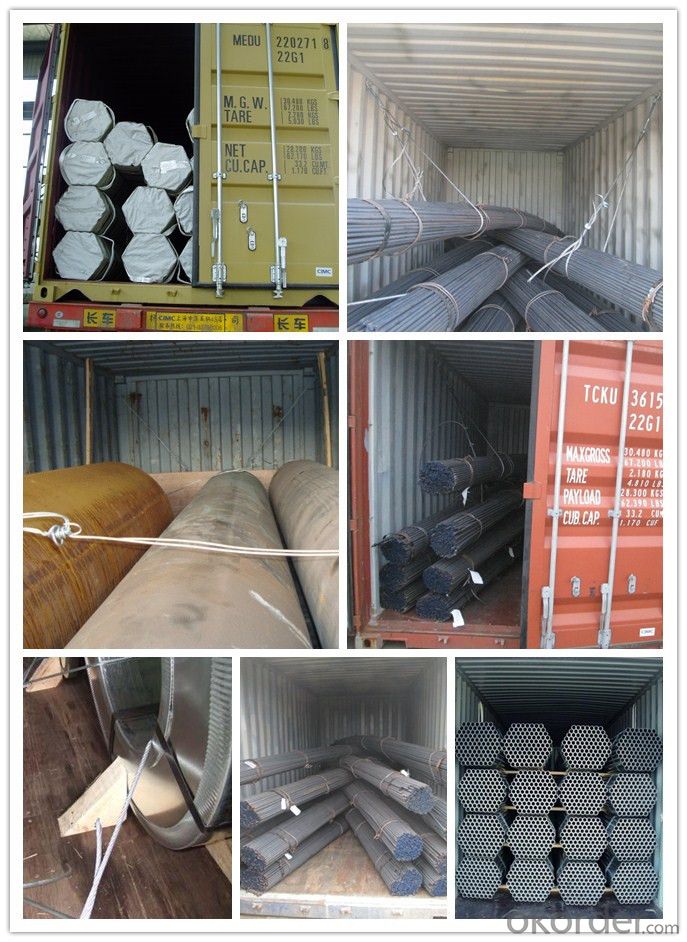
- Q: How do steel round bars compare to aluminum round bars?
- Steel and aluminum round bars differ in their properties and applications. When it comes to strength and durability, steel round bars surpass aluminum. Steel exhibits higher tensile strength and can withstand heavier loads and stresses, making it suitable for critical applications like construction or manufacturing machinery. In contrast, aluminum round bars are weaker and more prone to bending or breaking under heavy loads, hence they are typically used in lighter applications or when weight reduction is important. Weight-wise, aluminum round bars are significantly lighter than their steel counterparts. This quality makes aluminum a favored choice in weight-sensitive industries such as aerospace or automotive manufacturing. Moreover, the lightweight nature of aluminum round bars makes them easier to handle and transport. In terms of corrosion resistance, aluminum round bars excel due to the formation of a protective oxide layer on their surface. This layer acts as a barrier, protecting the metal from further corrosion and making aluminum suitable for outdoor applications or environments with high humidity or chemical exposure. On the other hand, steel round bars are more prone to rust and corrosion, necessitating protective coatings or treatments to enhance their resistance. In the cost department, steel round bars generally come out as the more cost-effective option. Steel is widely available and commonly used, making it more affordable in most cases. Conversely, aluminum round bars are pricier due to their production process and higher energy requirements. When it comes to thermal conductivity, aluminum round bars shine. They exhibit excellent thermal conductivity, efficiently transferring heat. This characteristic makes them well-suited for applications where heat dissipation is crucial, such as heat sinks or electrical conductors. While steel round bars do conduct heat to some extent, their thermal conductivity is lower compared to aluminum. Overall, steel round bars offer superior strength, durability, and cost-effectiveness, making them suitable for heavy-duty applications. On the other hand, aluminum round bars are lighter, possess excellent corrosion resistance, and exhibit superior thermal conductivity, making them ideal for lightweight applications and industries where weight reduction or heat dissipation are vital. Ultimately, the choice between steel and aluminum round bars depends on the specific requirements of the application.
- Q: What is the maximum manganese content allowed for steel round bars?
- The maximum manganese content allowed for steel round bars typically varies depending on the specific grade or specification of the steel. However, in general, most steel round bars have a maximum manganese content of around 1-1.5%.
- Q: Are steel round bars suitable for automotive applications?
- Yes, steel round bars are commonly used in automotive applications due to their high strength, durability, and versatility. They are often used to manufacture components such as axles, crankshafts, and suspension systems, as they provide the necessary strength and support required for these critical automotive parts.
- Q: What is the difference between a hot-rolled and a cold-drawn steel round bar?
- The manufacturing process and resulting properties distinguish a hot-rolled steel round bar from a cold-drawn one. To produce hot-rolled bars, a billet or ingot is heated to a high temperature, typically around 1100 to 1300 degrees Celsius, and then rolled into the desired shape and size. This process yields a rougher surface finish and larger tolerances compared to cold-drawn bars. Hot-rolled bars exhibit less precision in dimensions and may contain surface defects such as scale or rust. In contrast, cold-drawn bars undergo manufacturing by pulling a hot-rolled bar through a die at room temperature. This process reduces the diameter and enhances the surface finish, resulting in a smoother and more precise product. Cold-drawing also improves the mechanical properties of the steel, including increased strength, hardness, and improved surface quality. The cold-drawing process provides closer dimensional tolerances, making cold-drawn bars suitable for applications that demand higher precision. In conclusion, the distinction between hot-rolled and cold-drawn steel round bars lies in the manufacturing process, resulting in differences in surface finish, dimensional tolerances, and mechanical properties. Hot-rolled bars are produced at high temperatures, possess a rougher surface, and have larger tolerances. On the other hand, cold-drawn bars are manufactured at room temperature, exhibit a smoother surface, closer dimensional tolerances, and enhanced mechanical properties. The choice between the two depends on specific application requirements and the desired characteristics of the final product.
- Q: What is the maximum temperature a steel round bar can withstand?
- The maximum temperature that a steel round bar can withstand depends on the specific grade and composition of the steel. Generally, most steel alloys can withstand temperatures up to around 1200°C (2200°F) before experiencing significant structural changes or loss of strength. However, it is always recommended to consult the manufacturer's specifications or engineering data for the specific steel alloy in question to determine its maximum temperature tolerance.
- Q: Can steel round bars be painted or coated?
- Yes, steel round bars can be painted or coated with various types of protective coatings to enhance their durability and prevent corrosion.
- Q: What are the advantages of using nickel-chromium-titanium alloy steel round bars?
- Some advantages of using nickel-chromium-titanium alloy steel round bars include their high strength and durability, excellent corrosion resistance, and good heat resistance. These alloy steel round bars also offer superior wear resistance and can withstand harsh environments. Additionally, they have good machinability, making them suitable for various applications in industries such as aerospace, automotive, and oil and gas.
- Q: Are steel round bars suitable for conveyor belt applications?
- Steel round bars can be suitable for conveyor belt applications, depending on various factors. Steel round bars are known for their strength, durability, and resistance to wear and tear. These qualities make them a viable option for conveyor belt applications that involve heavy loads, high speeds, or abrasive materials. One of the main advantages of using steel round bars in conveyor belt applications is their ability to withstand heavy loads. The strength of steel ensures that the bars can support the weight of the conveyed materials without bending or breaking. This is particularly important in industries where large quantities of bulky or heavy materials need to be transported continuously. In addition, steel round bars are highly resistant to wear and tear. The smooth surface of the bars minimizes friction, reducing the wear on the conveyor belt and extending its lifespan. This is crucial in applications where the conveyor belt is subjected to constant movement and contact with abrasive materials, such as mining or construction industries. Furthermore, steel round bars can withstand high speeds without compromising their structural integrity. They have a high tensile strength, allowing them to handle the forces exerted on the conveyor belt during acceleration or deceleration. This ensures smooth and efficient operation of the conveyor system, minimizing downtime and improving productivity. However, it is important to consider the specific requirements of the conveyor belt application when choosing steel round bars. Factors such as the type of conveyed materials, the environment in which the conveyor operates, and the specific load and speed requirements should be taken into account. In some cases, alternative materials or coatings may be necessary to enhance the performance and longevity of the conveyor system. In conclusion, steel round bars can be suitable for conveyor belt applications due to their strength, durability, and resistance to wear and tear. However, careful consideration of the specific application requirements is necessary to ensure optimal performance and longevity of the conveyor system.
- Q: What is the difference between a ground and a polished steel round bar?
- A ground steel round bar and a polished steel round bar differ in their surface finish and appearance. A ground steel round bar is subjected to a grinding process, where a grinding wheel or belt is used to remove any surface imperfections, such as roughness or irregularities. This process results in a smooth and even surface finish. Ground steel round bars are often used in applications where precision and tight tolerances are required, such as in machinery or automotive components. On the other hand, a polished steel round bar undergoes a polishing process, where abrasive materials such as polishing compounds or buffing wheels are used to create a high shine and reflective surface. This process enhances the aesthetics of the steel bar, making it more visually appealing. Polished steel round bars are commonly used in decorative applications, architectural projects, or in industries where a visually pleasing appearance is desired, such as jewelry or interior design. In summary, while both ground and polished steel round bars serve different purposes, the main difference lies in their surface finish. Ground steel round bars prioritize precision and smoothness, while polished steel round bars prioritize a shiny and reflective appearance.
- Q: Are steel round bars suitable for plumbing applications?
- Steel round bars are indeed a suitable option for plumbing applications due to their durability and strength. This material is particularly well-suited for plumbing systems that necessitate high pressure and load-bearing capabilities. Plumbing components like pipes, fittings, valves, and supports can all be crafted from steel round bars. Its resistance to corrosion and long-lasting nature make it a popular choice in water supply systems, underground piping, and industrial plumbing. Nevertheless, it is crucial to carefully consider the specific requirements of each plumbing application, including factors like water quality, temperature, and compatibility with other materials. Furthermore, the proper installation and maintenance of steel round bars are essential for ensuring their effectiveness and longevity in plumbing systems.
Send your message to us
Carbon Steel Rod SAE 1020 Carbon Steel Bar
- Loading Port:
- Shanghai
- Payment Terms:
- TT OR LC
- Min Order Qty:
- 30 m.t.
- Supply Capability:
- 120000 m.t./month
OKorder Service Pledge
OKorder Financial Service
Similar products
Hot products
Hot Searches
Related keywords
